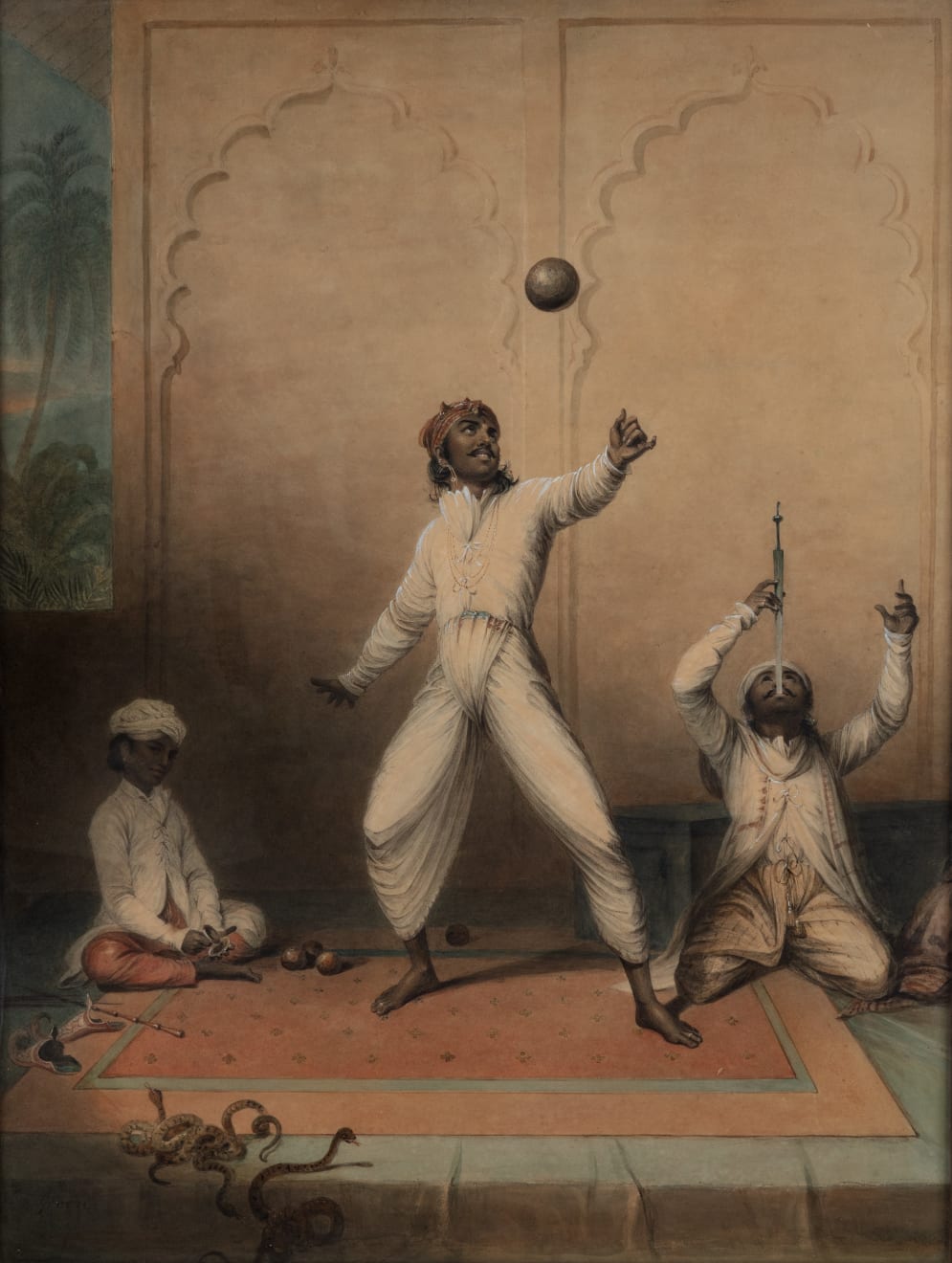James Green (British, 1771-1834) – ‘The Indian Jugglers’
ENGLAND, circa 1814
81.5 x 62 cm
Further images
Provenance
Costume jewellery designer Kenneth J. Lane.Exhibitions
The Royal Academy, London, ‘The Forty-Sixth Exhibition of the Royal Academy’ in 1814, no. 501.
The Pierpont Morgan Library, New York from 1 May to 31 July 1986; and the Los Angeles County Museum of Art from 2 October 1986 to 4 January 1987 for the exhibition ‘From Merchants to Emperors: British Artists in India, 1757-1930’.
Depicting an interior scene with three Indian males: the central figure is juggling; the figure on the right-hand side is swallowing a sword; and the figure on the left-hand side is playing a pair of cymbals. Exotic trees can be seen through the window and a number of snakes are writhing in the foreground. The figures appear to be raised on a dais, suggesting that they are performing for an audience.
A label on the reverse of the painting notes that: ‘[t]he British found the jugglers and snake charmers of India a novelty. One traveller wrote enthusiastically that their bodies “are so lithe and supple, as to resemble those of serpents rather than men…. Swallowing the sword is a common operation, even by those who are not considered to be the most expert”.’ At the time, groups of Indian jugglers travelled to England to perform, and these were well received. The label notes that James Green did not visit India and subsequently the painting was most likely inspired by one of these travelling troupes.
Kenneth Jay Lane moved into his Stanford White-designed apartment at 23 Park Avenue, New York in the 1970s and filled it with artefacts which he collected from around the world.
James Green (1771-1834): was born at Leytonstone in Essex, 13 March 1771, was son of a builder. He was initially apprenticed to Thomas Martyn, a draughtsman of natural history who resided at 10 Great Marlborough Street. When his apprenticeship expired, he entered the Royal Academy schools in 1791. Here he attracted the notice of Sir Joshua Reynolds and copied many of his pictures. In 1792 he first exhibited at the Royal Academy, showing views of Oxford Market and Chapel; and in 1793 he exhibited several views of Tunbridge Wells, along with some portraits. He achieved a reputation for his portraits in watercolour, many of which have been engraved. His portraits are housed in the National Portrait Gallery, London. Green gradually achieved a reputation for his portraits in watercolour, and many of them were engraved and reproduced as prints. Green was a frequent exhibitor at the British Institution, where he showed mainly genre and subject pictures and was also a member of the Associated Society of Artists in Watercolours. A large number of his pictures were commissions. In 1805, Green married Mary Byrne, a portrait artist and miniaturist and the daughter of the landscape-engraver William Byrne. He lived for many years in South Crescent, Bedford Square, and died in Bath on 27 March 1834.










